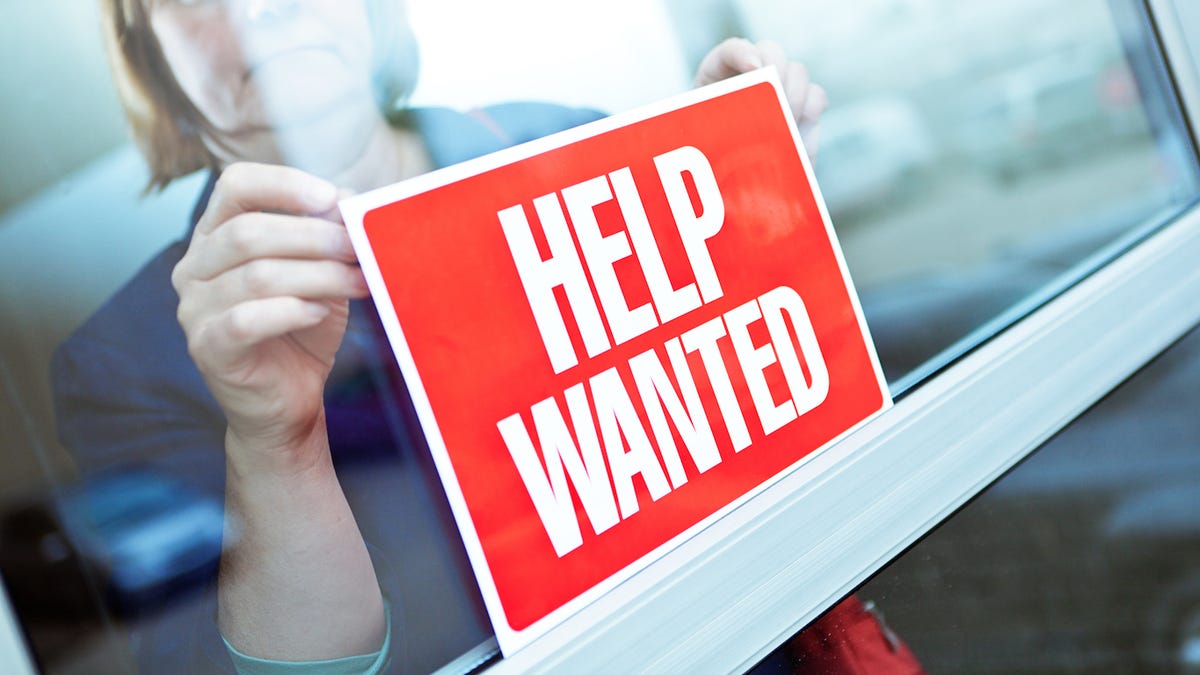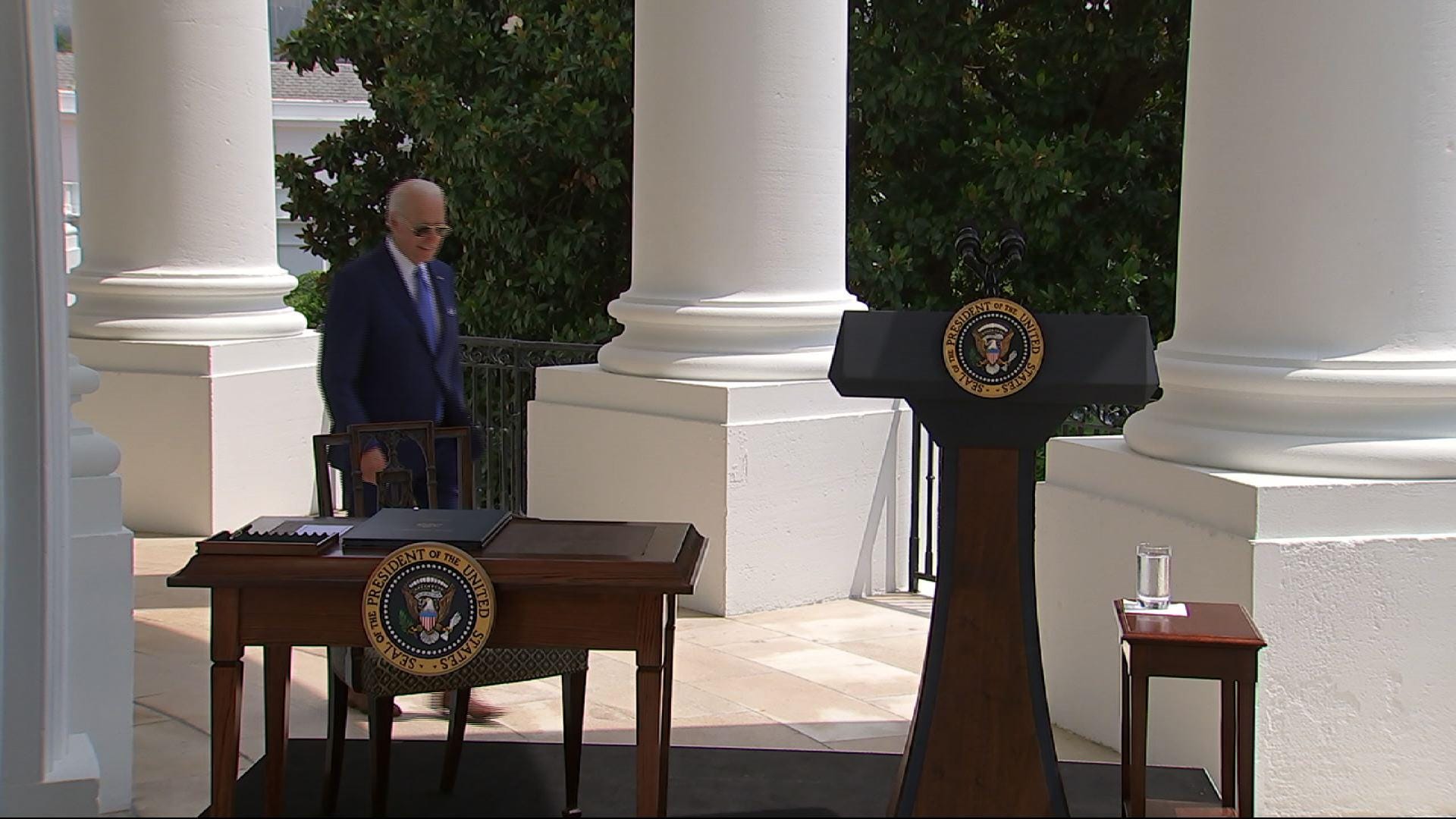

Biden hails ‘outstanding’ July jobs report
President Joe Biden hailed the July jobs report Friday showing that U.S. employers added an astonishing 528,000 jobs last month despite flashing warning signs of an economic downturn. Biden called it “the fastest job growth in history.” (Aug. 5)
AP
FrescoData has seen sales flatline this year, but that isn’t stopping the San Diego-based email marketing company from adding seven workers in coming months.
Last year, amid dire labor shortages, the 26-employee firm struggled to attract job candidates as it battled larger competitors offering higher pay.
“I’m preparing for the holidays,” says CEO Tony Raval, citing “the hardship that we faced last year not having enough people.”
Now, with recession fears mounting, some of those bigger rivals are laying off staffers, and Raval aims to scoop them up. “We’re looking to take advantage of that,” he says.
Quiet quitting: What is quiet quitting?: Employees suffering pandemic burnout say they’ve just stopped working as hard
A new gender gap: Men recovered all jobs lost during the pandemic. Women have not.
Millions of businesses are taking a similar approach, helping the labor market defy expectations of a sharp slowdown and remain a pillar of strength in an otherwise wobbly economy. Consumer spending is moderating because of rampant inflation. The economy contracted the first half of the year (though top economists say we’re not in a recession). The Federal Reserve is aggressively raising interest rates to fight soaring prices. And the Fed’s campaign, along with the recession chatter, has hammered the stock market.
Yet somehow the job market has remained surprisingly strong, an achievement worth noting as the nation celebrates Labor Day on Monday. Job growth did slow to 315,000 in August following a blockbuster 526,000 in July, the Labor Department said last week, but that’s still historically robust and it pushes the U.S. over the finish line in the recovery of all 22 million jobs lost in the early days of the pandemic. That translates to an average 438,000 monthly advances this year.
Several factors are driving the remarkable showing. Worker shortages have discouraged many businesses from laying off workers and prodded others to stick to their hiring plans despite the economy’s warning signals, economists and staffing officials say.
Also, many industries are still catching up after shedding employees during the COVID-19 recession. Americans have shifted their purchases from goods to more labor-intensive services, like dining out and traveling. And weak labor productivity – or output per hour of work – is forcing many employers to add staffers to meet demand.
“The labor market remains incredibly strong and is likely to remain so,“ says Traci Fiatte, CEO of professional and commercial staffing for Ranstad, an employment agency.
Economists do expect job growth to pull back as the Fed continues to raise interest rates to slow inflation and the economy, but at a slower pace than had been forecast.
Mark Zandi, chief economist of Moody’s Analytics, now expects payroll gains to average slightly more than 100,000 a month by the end of the year, compared with his estimate of about 50,000 several months ago.
A slowdown “is going to happen,” Zandi says.
In the short term, the robust job gains are providing Americans more income that they can spend, propping up the economy and staving off a recession, says Matthew Luzzetti, chief U.S. economist of Deutsche Bank. But the booming payroll additions and rapid wage growth mean the Fed probably will raise interest rates more aggressively to tame inflation, increasing the risk of a downturn by mid-2023, Luzzetti says.
Some employers are already hunkering down. Outlaw, which sells colognes, soaps and other fragrances online, has scrapped its plan to add three employees to its staff of 16 ahead of the holidays, says Danielle Vincent, CEO of the Sparks, Nevada-based company.
“We’re concerned about the uncertainty,” Vincent says. She points to the recession worries and notes the company sells a discretionary product that could be hit hard if consumers tighten their belts.
Many companies, though, are forging ahead with hiring plans or at least avoiding layoffs.
Here’s why:
Worker shortages
Labor crunches have improved since schools have reopened, and enhanced unemployment benefits expired a year ago. But shortages are still severe. In July, job openings neared a record 11.2 million, or two for every unemployed American, Labor Department data shows.
So while lots of businesses are posting smaller sales gains or even declines, many have had such a tough time finding employees that they’re reluctant to lay people off. That haskept elevated net monthly job gains, which include all cuts and hiring.
Even if the economy continues to sputter or slips into recession, “they’re thinking, ‘Sales will rebound and I’ll have a hell of a time” filling the vacancies, Zandi says.
To be sure, some companies have announced significant job cuts in recent months, including Oracle, Amazon, Netflix and Ford. And initial jobless claims, a gauge of layoffs, have trended higher since spring. But they dipped recently and remain historically low. The share of all those employed who were laid off or fired was near a record low at 0.9% in July.
Many employers believe any downturn will be short-lived, and so they figure “’l’ll ride it out because (finding workers) is so expensive,’” says Jim McCoy, senior vice president of staffing firm Manpower. Some companies that need to trim staff are instead retraining employees and shifting them to other departments, McCoy says.
Employers generally aren’t hiring workers who aren’t needed now, McCoy and Zandi say. But Julia Pollak, chief economist at job site ZipRecruiter, says some hoarding is happening.
Raval, head of FrescoData, the email marketing company, says his hiring plans are on track even though sales are flat in part because “it will take three or four months for employees to get trained” so they’re in place for the holidays.
Of recession jitters, he says, “What if there is no recession?”
Even some firms in the industry hit hardest by rising interest rates – housing – are hiring.
St. Louis-area home sales fell 23.6% in July from the year-earlier period, according to St. Louis Realtors, a trade group. But the Hermann London Group, a real estate brokerage in Maplewood, Missouri, is looking to add two administrative staffers and five to 10 brokers, says owner Adam Kruse.
“I think of it as an opportunity,” Kruse says. “Many realtors are getting scared” and cutting staffers. “I want to be one of those gaining market share.”
Catching up from COVID job cuts
Although the nation has recovered all the jobs wiped out in the pandemic, it’s a few million short of where it would be if the pandemic hadn’t happened. Leisure and hospitality – which includes restaurants, bars and hotels, sectors decimated by COVID-19 – is still 1.2 million jobs shy of its pre-pandemic level.
“If you look at spending at restaurants, it’s fully recovered, but there’s a huge jobs hole,” says Pollak, the chief economist at ZipRecruiter.
Many consumers, meanwhile, are still flush with more than $2 trillion in savings they socked away during the crisis and are resuming activities as COVID-19 eases, she says. Employers also are still struggling to fill longstanding openings created by the labor shortage.
Neema Hospitality, which owns a dozen hotel franchises in the mid-Atlantic region, finally crept close to its normal summer occupancy of about 80% the past few months as Americans hit the road despite record gas prices, president Sandeep Thakrar says. The company has hired 30 permanent staffers and about 20 temporary workers this year, but it still has about 25 openings.
“We’re always understaffed,” he says.
Other businesses say worker deficits are improving.
Forever Floral, which sells handcrafted artificial bouquets online, is adding 25 employees this year, says interim CEO Alex Ledoux. Sales at the 110-employee company have doubled in 2022 as couples hold weddings that were deferred earlier in the pandemic.
Despite the labor shortage, Ledoux says, the Ogden, Utah-based company is receiving about 100 applications per opening, versus about 10 earlier in the crisis.
The pivot from goods to services
As the pandemic has waned, Americans have shifted their purchases from TVs, furniture and other goods to services like dining out and moviegoing, says economist Bob Schwartz of Oxford Economics.
But such services require more workers than factories, which rely heavily on labor-saving technology. In July, services accounted for 402,000 of the 528,000 job gains, Schwartz says.
Weak productivity growth
Because the economy is adding workers while gross domestic product has declined, productivity, or output per labor hour, has fallen this year.
One reason for the trend is that many employees who burned out after making up for absent colleagues earlier in the pandemic are resolving not to do more than the minimum. The trend, called “quiet quitting,” is forcing employers to hire more workers to churn out products and services.
Whatever is behind this Teflon labor market, workers are reaping the benefits. Last November, Dominick Gula, a call center manager, decided to look for a warehouse supervisor job and got responses from 90% of the 25 or so companies he contacted.
Gula, 33, who lives in Sunset, Utah, got offers from two companies and accepted one from Forever Floral after Ledoux interviewed him personally and raised his proposed wage by 15%. Just months after starting, Gula is poised to get another 20% raise.
He didn’t respond to several prospective employers because they pushed him to start immediately.
“A few seemed desperate,” he says.
